You can amplify the effects of rosemary by combining its essential oil with other hair-nourishing oils and your hair will soak up the benefits. Use this rosemary hair serum on hair daily to spark growth and get shiny, healthy strands. It's a cinch to make and it smells amazing too!
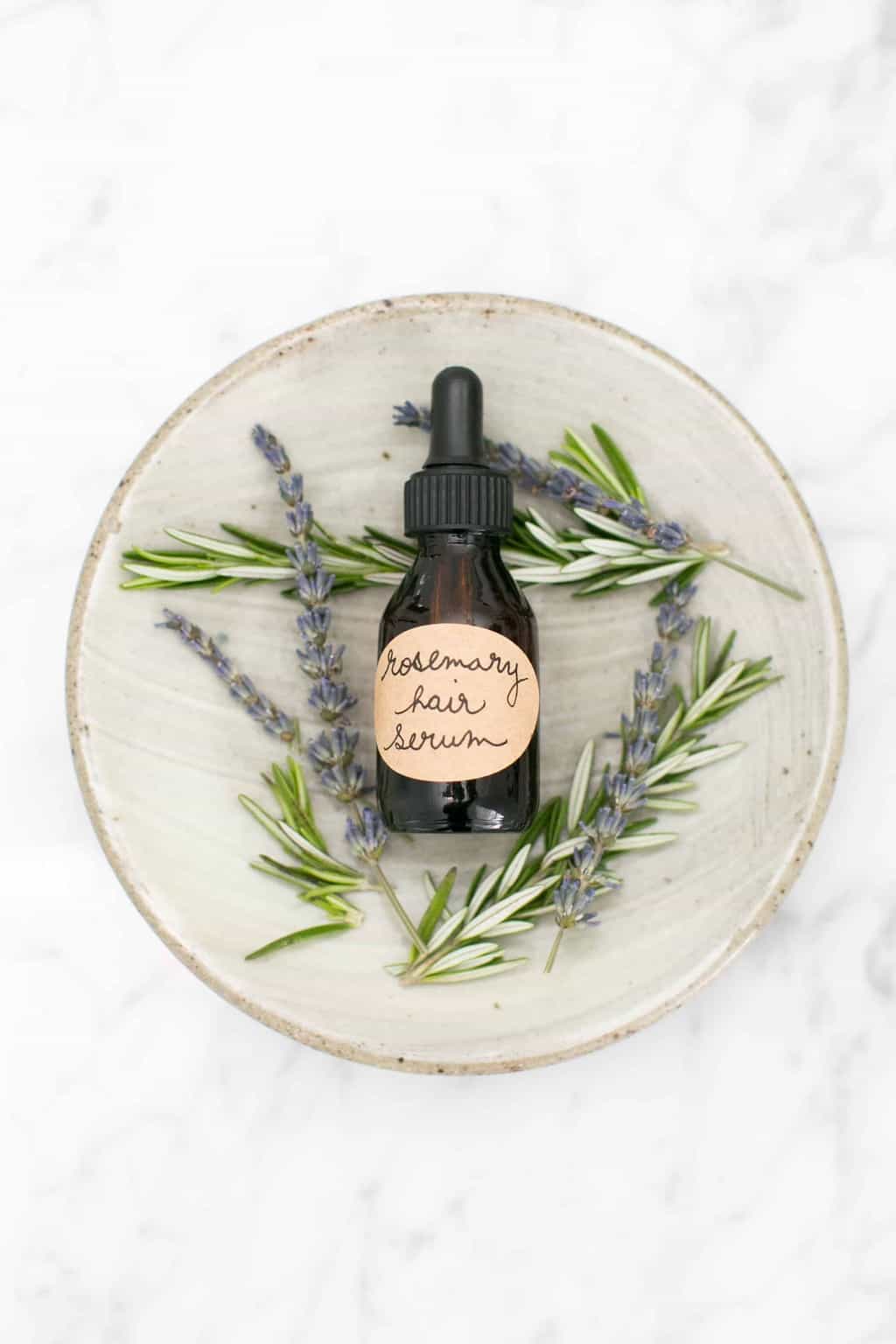
I've long used rosemary essential oil as a natural remedy for my thin hair that turned the corner into thinning hair as I got older. Adding a scalp serum to my routine—along with some hair vitamins and rice water—has improved the thickness and texture of my hair.
Want to learn about the benefits of using rosemary oil for hair growth and how to use it effectively? Read on!
Jump to:
- How Rosemary Benefits Your Hair
- Does Rosemary Help with Hair Growth?
- 1. How To Make Rosemary Oil for Hair Growth
- Ingredients
- Instructions
- How To Use Rosemary Hair Oil
- 2. How To Make a Rosemary Hair Serum with Essential Oils
- Ingredients
- Instructions
- How To Use Rosemary Hair Serum
- 3. How To Make Rosemary Water for Hair
- Ingredients
- Instructions
- Ways To Use Rosemary Hair Tea
- Before you go...
- References
How Rosemary Benefits Your Hair
Rosemary oil has quite a few benefits for your hair. Here are just a few:
- Promotes hair growth: Rosemary oil can help stimulate hair growth by increasing blood circulation in the scalp and promoting the delivery of oxygen and nutrients to hair follicles.
- Improves hair thickness and texture: The essential fatty acids in rosemary oil nourish and strengthen hair, improving its texture and thickness.
- Prevents hair loss: Rosemary oil contains antioxidants that can help prevent hair loss by neutralizing free radicals and reducing inflammation in the scalp.
- Fights dandruff: The anti-inflammatory properties of rosemary oil can help reduce scalp irritation and dandruff.
- Soothes an itchy scalp: Rosemary oil can help soothe the itch by reducing inflammation and irritation.
- Conditions and moisturizes hair: Rosemary oil can leave hair soft, shiny, and healthy-looking.
- Reduces stress: The scent of rosemary oil can have a calming effect, which helps reduce stress and tension that can contribute to hair loss.
Does Rosemary Help with Hair Growth?
Some scientific research suggests that rosemary oil may be beneficial for hair growth and reducing hair loss. Here are some findings:
- A study published in 2012 looking at the effect of rosemary on hair loss in mice showed improved regrowth of hair after applying rosemary leaf extract [source].
- An older study had previously found that a scalp massage with a mixture of carrier oils and essential oils, including rosemary oil, led to a significant increase in hair growth after 7 months of daily treatment [source].
- In 2015, researchers published a study with the findings that topical rosemary oil exhibited hair growth-promoting activity equivalent to that of minoxidil 2% in mice after 6 months of daily use, suggesting that it may also have the potential for promoting hair growth in humans [source].
- The mechanism was later determined to be an increase in blood flow around the hair follicles, similar to that of minoxidil [source]. It has also been shown to reduce inflammation [source].
While these studies suggest that rosemary oil may be helpful when dealing with hair loss, more research is needed to fully understand its effects and mechanisms of action.
1. How To Make Rosemary Oil for Hair Growth
Making this rosemary hair oil recipe is a simple process that can be done at home using fresh or dried rosemary leaves and a carrier oil. Rosemary-infused oil is not as potent as rosemary essential oil, but you'll still reap some of its herbal benefits.
Here's how to make homemade rosemary oil for hair growth:
Ingredients
- 1 cup jojoba oil (or other carrier oil such as coconut or olive)
- ½ cup fresh or dried organic rosemary leaves
- A clean glass jar with a tight-fitting lid
- Cheesecloth or a fine-mesh strainer
Instructions
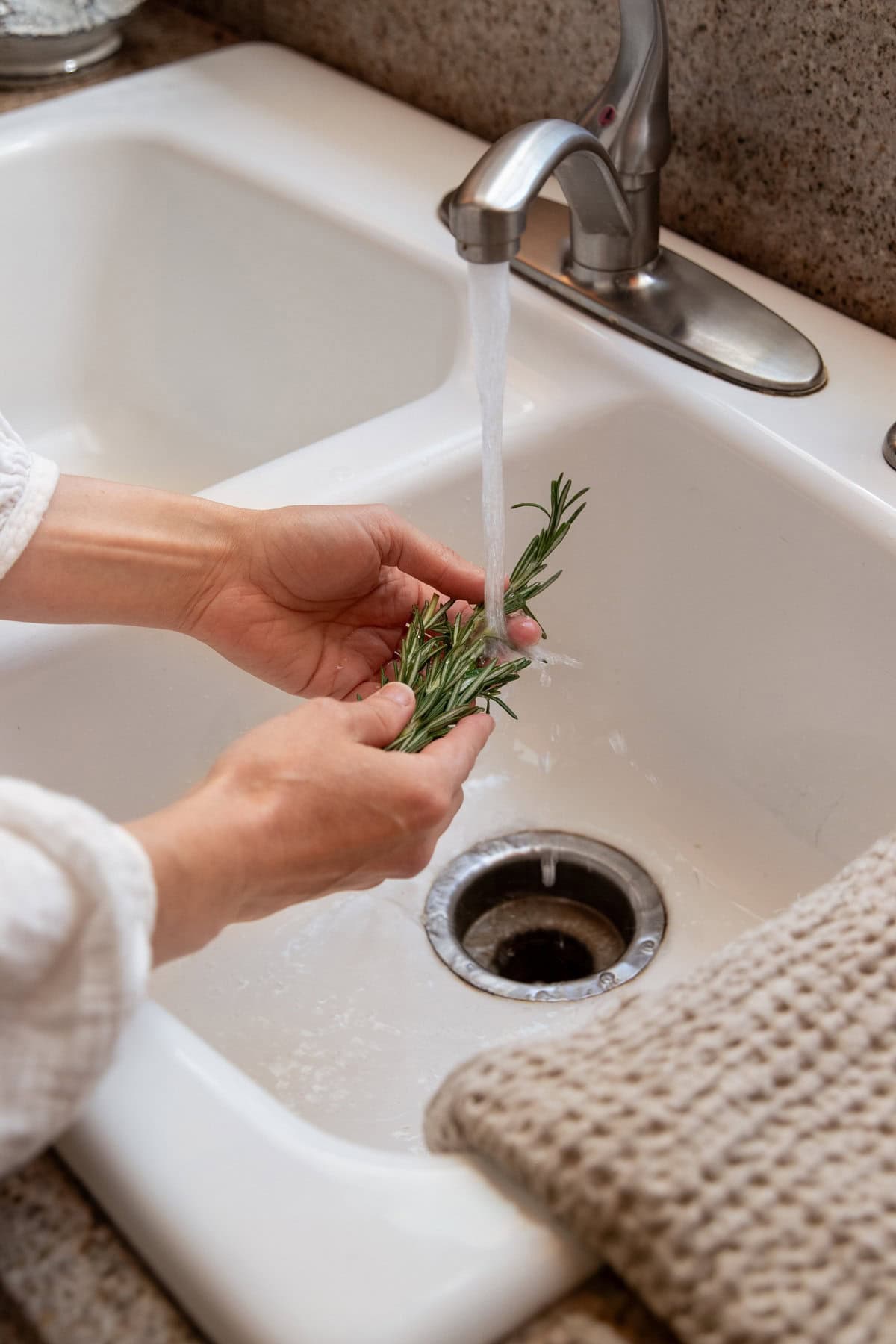
Step 1: Wash rosemary
Wash the rosemary leaves thoroughly and allow them to dry completely.

Step 2: Crush the leaves
Crush the rosemary leaves slightly with your fingers or a mortar and pestle to release their essential oils.
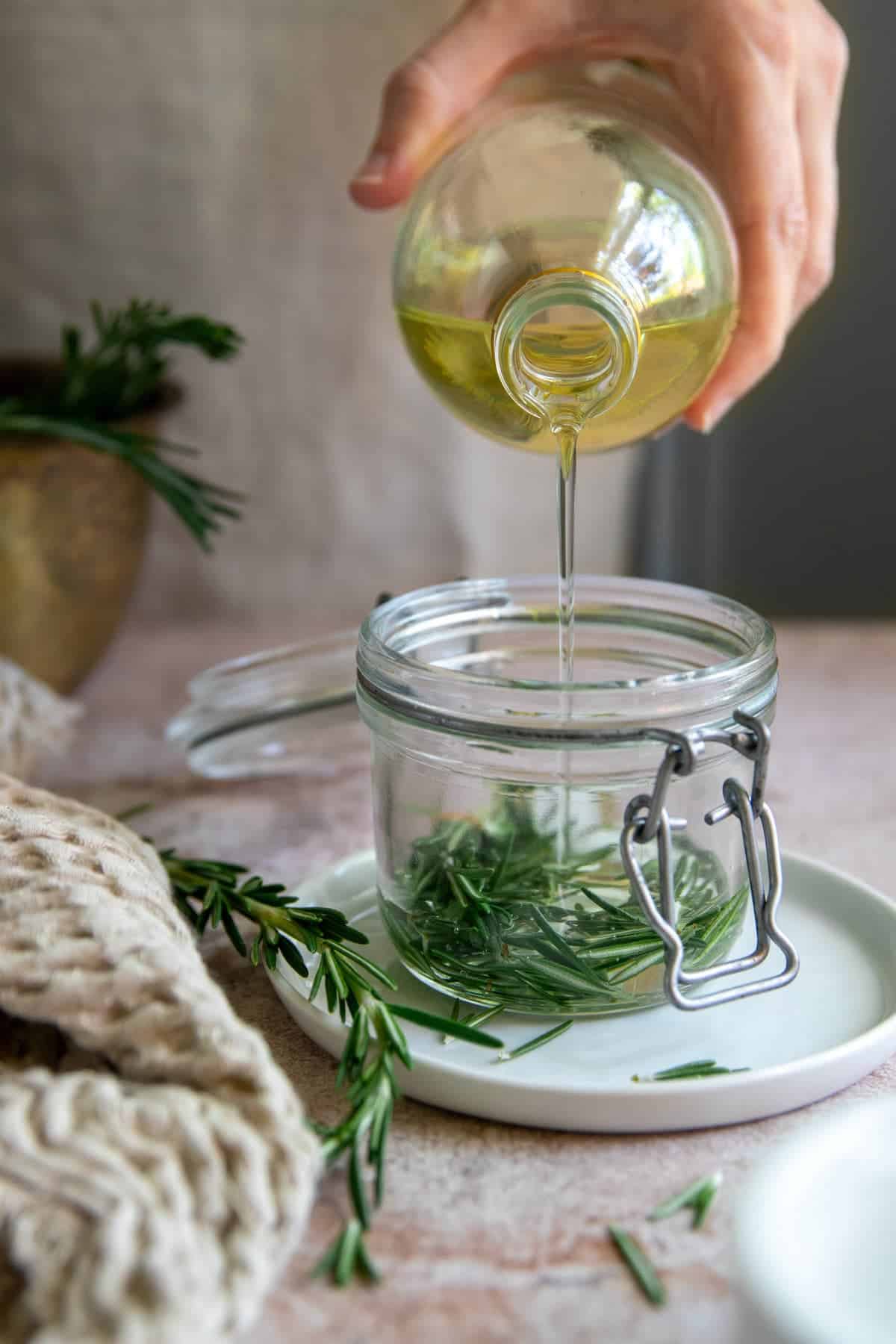
Step 3: Combine rosemary + oil
Add the crushed rosemary leaves to the glass jar and cover them with the carrier oil. Make sure the leaves are completely submerged in the oil.
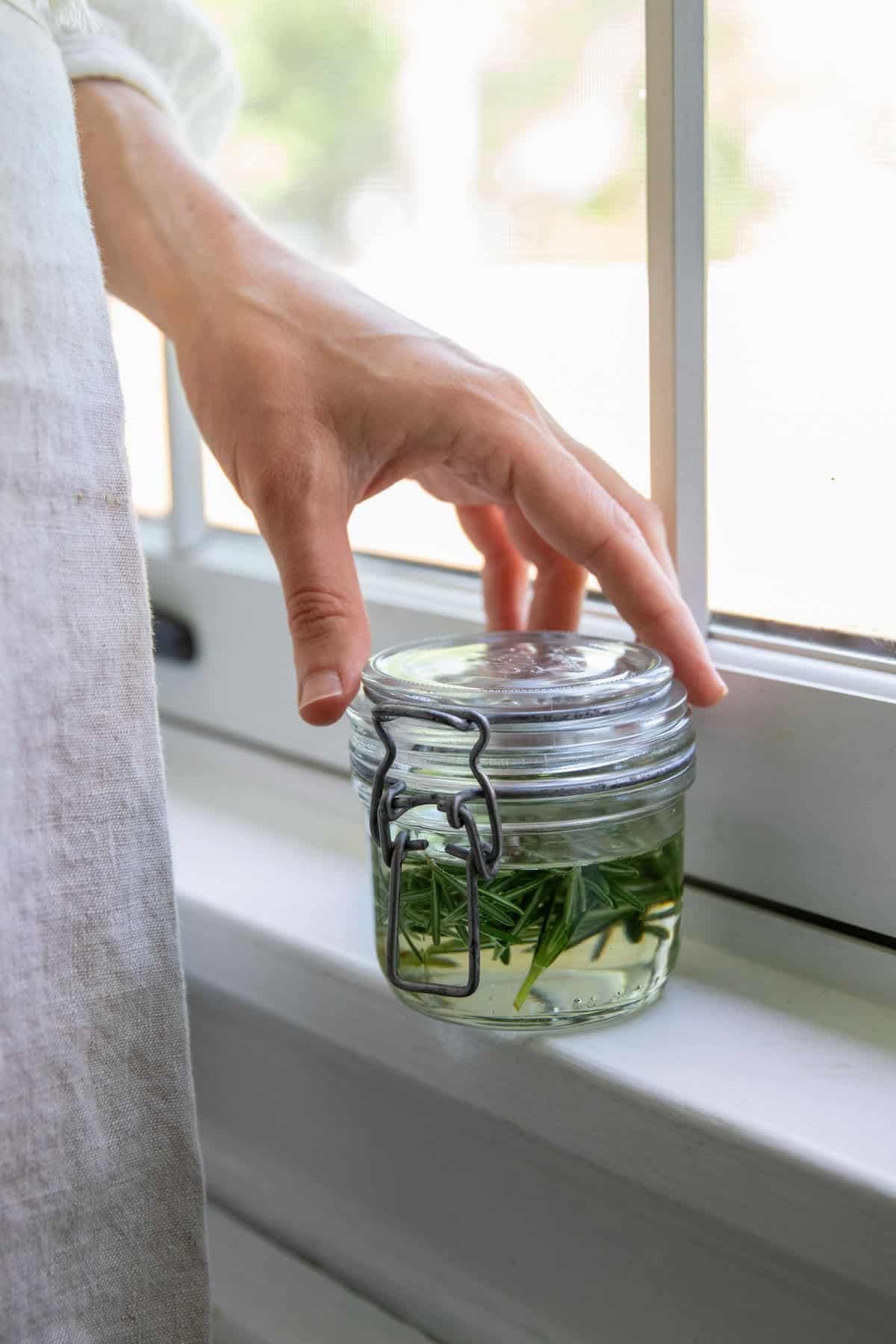
Step 4: Infuse for 2 weeks
Seal the jar tightly and place it in a cool, dark place for at least 2 weeks. Place the jar in a warm spot, like a sunny windowsill, for a few hours each day to speed things up.

Step 5: Strain the oil
After 2 weeks, strain the oil through a cheesecloth or fine-mesh strainer to remove the rosemary leaves.
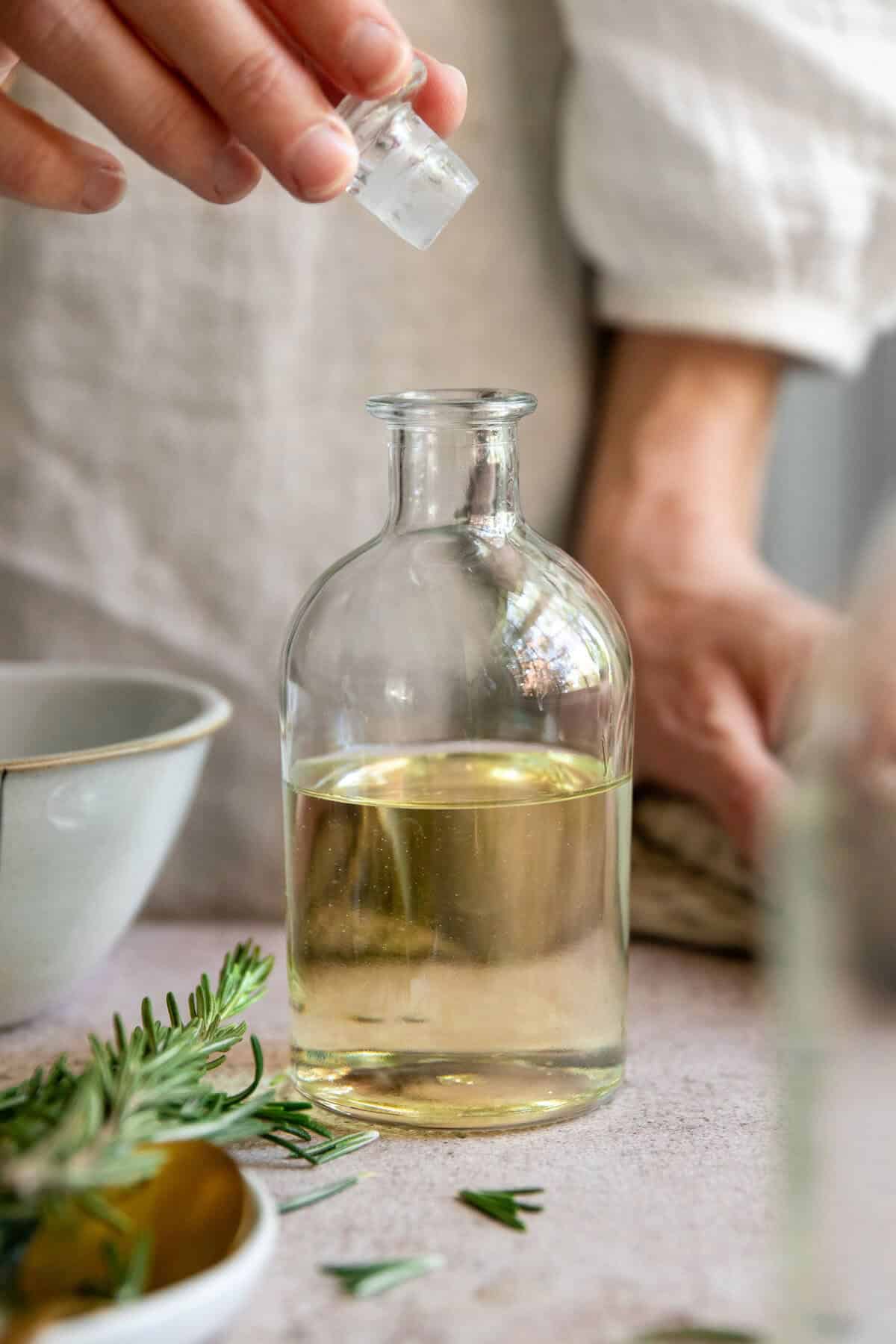
Step 6: Bottle the oil
Store the rosemary oil in a clean, airtight glass jar and place in a cool, dark place until ready to use.
How To Use Rosemary Hair Oil
Scalp massage: Massage a small amount onto your scalp and hair, focusing on areas where you want to promote hair growth or reduce dandruff. Leave the oil on your hair for at least 30 minutes or overnight before washing it out with shampoo and conditioner. Use the rosemary oil for hair once or twice a week for the best results.
You can also do this before bed so your hair can soak in the benefits overnight, and then wash it out in the morning. If you have a really hard time getting the oils out of your hair, combine a bit of gentle dish soap with shampoo in your hand to cut the grease.
Hair Mask: Mix a few drops of rosemary oil with your favorite hair mask or deep conditioner and apply it to your hair. Leave the mask on for 30 minutes to an hour before rinsing it out with water. This can help condition and moisturize your hair, leaving it soft and shiny.
Shampoo and Conditioner: Using a shampoo with a high concentration of rosemary oil or rosemary leaf extract is another way to add this herb to your hair care routine. Rosemary delivers antioxidants to the scalp, providing essential nutrients to the follicles to keep hair looking healthy and shiny.
Add a few drops of rosemary oil to your regular shampoo and conditioner and use them as usual.
2. How To Make a Rosemary Hair Serum with Essential Oils
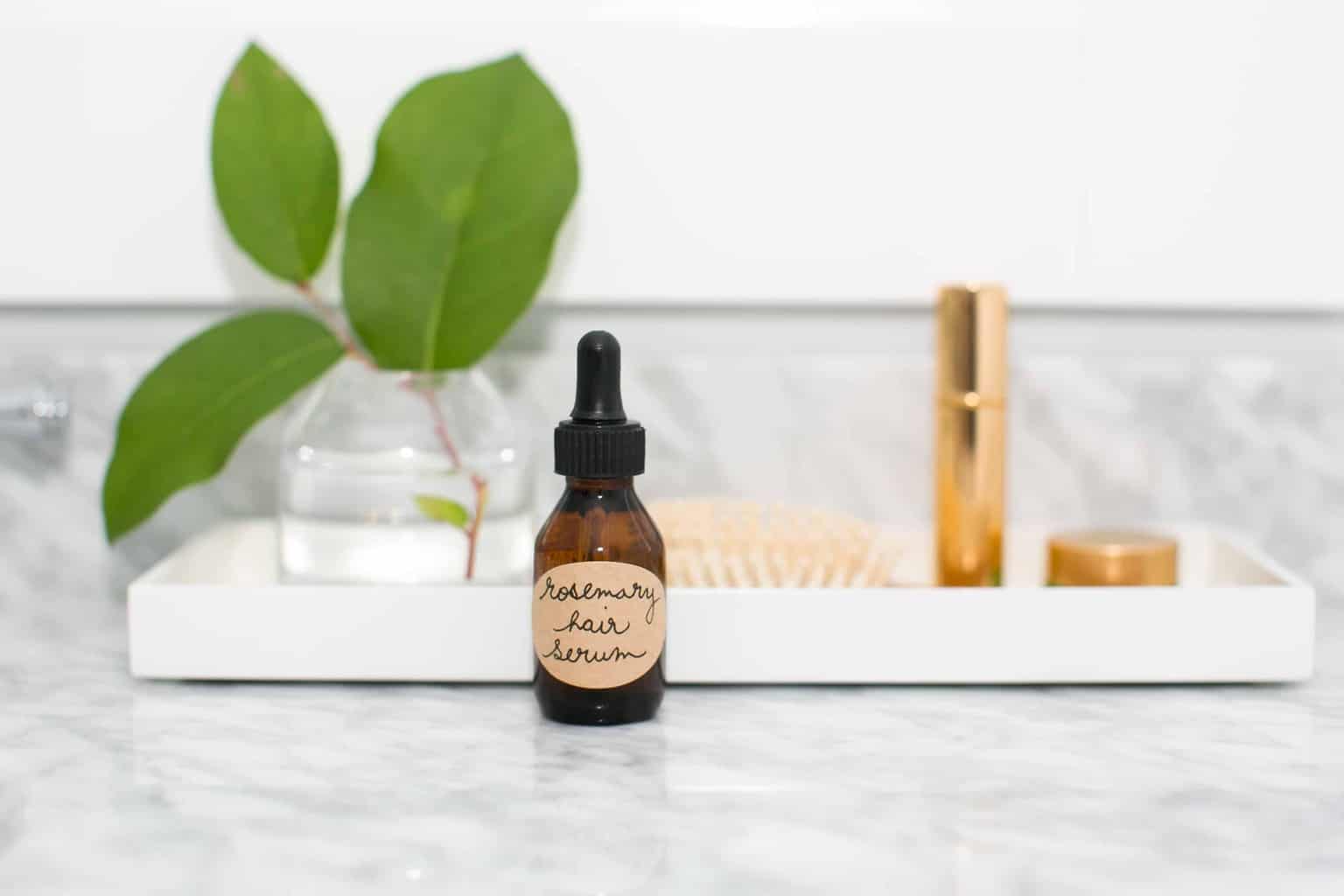
This hair serum recipe takes hair nourishment to the next level by combining rosemary-infused oil with rosemary essential oil.
Rosemary essential oil has been used for centuries to promote hair growth and improve overall hair health. It is extracted from the leaves of the rosemary plant, which contains a variety of beneficial compounds, such as antioxidants, anti-inflammatory agents, and essential fatty acids [source].
Here's what you'll need to make a rosemary hair serum recipe:
Ingredients
- Jojoba oil is not a true oil. It’s actually composed of 98% liquid plant wax with a structure similar to the sebum our scalp produces [source]. Because this nourishing oil is an excellent emollient [source] that won’t clog hair follicles, jojoba is an excellent conditioner for dry, treated hair [source] and is said to stimulate hair growth.
- Argan oil is a “dry” oil, meaning that it’s light and absorbs quickly. Rich in fatty acids, antioxidants, and vitamin E, argan oil conditions and moisturizes dry or damaged hair. Research has shown that it protects the hair against oxidative damage [source].
- Rosemary essential oil is an invigorating oil that can stimulate hair growth [source]. The plant is also known for its antimicrobial effects [source] and has been shown to help with dandruff [source].
- Lavender essential oil helps combat oily hair and dandruff. When used as a daily application in animal studies, lavender was shown to promote hair growth [source].
Instructions

Step 1: Add carrier oil to a bottle
Add 2 tablespoons of carrier oil to a bottle with a dropper lid. You can use 2 tablespoon of infused oil or a combination like this:
- 1 tablespoon rosemary-infused jojoba oil
- 1 tablespoon argan oil or sesame seed oil
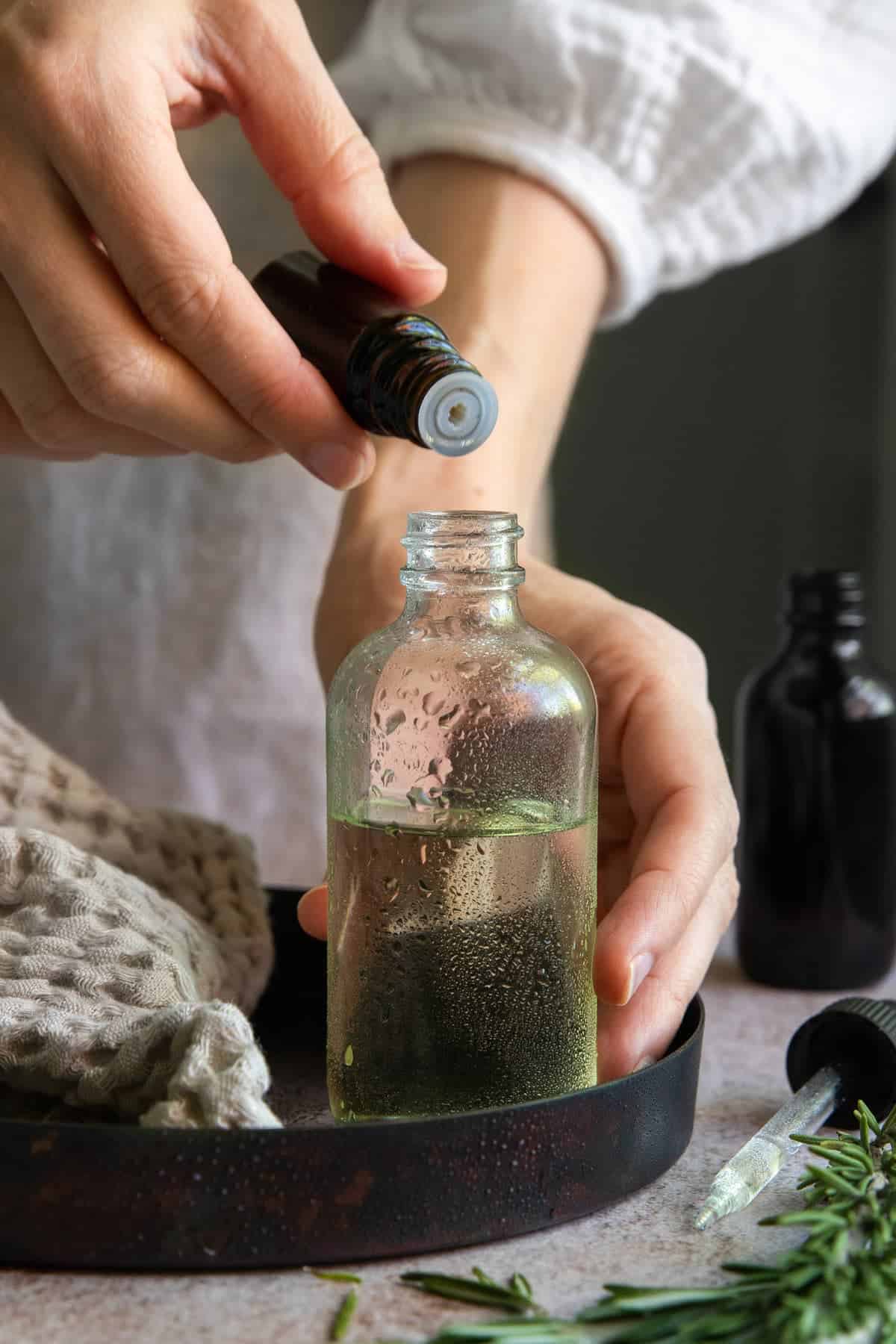
Step 2: Add rosemary essential oil
Add the essential oils and mix well.
- 8 drops rosemary essential oil
- 6 drops lavender essential oil
If you're only using rosemary essential oil, up the number of drops to 12–14.
Hint: You can adjust the ratio of rosemary essential oil to carrier oil based on your hair type and needs. For example, if you have a sensitive scalp, you may want to use more carrier oil and fewer drops of rosemary essential oil.
How To Use Rosemary Hair Serum

Scalp massage: Test the mixture on a small patch of skin on your arm or wrist to make sure you don't have an allergic reaction or a sensitivity to the oil.
If there are no adverse reactions, massage the diluted rosemary oil onto your scalp and hair, focusing on areas where you want to promote hair growth or reduce dandruff. Leave the oil on your hair for at least 30 minutes or overnight before washing it out with shampoo and conditioner.
Pre-shampoo mask: Massage the mixture into your scalp and hair, and leave it on for at least 30 minutes. Then shampoo and condition as usual. Repeat this treatment once or twice a week for the best results.
Shampoo upgrade: You can also add rosemary essential oil to your current shampoo. Just add 10 drops for each ounce of shampoo and mix well.
Hair mask: Mix 2 tablespoons of fresh aloe vera gel with 10–12 drops of rosemary EO and apply the mixture to your hair and scalp. Leave it on for 20 to 30 minutes, then rinse it off with warm water and shampoo as usual. This mask can help to soothe an irritated scalp, moisturize your hair, and promote hair growth.
3. How To Make Rosemary Water for Hair
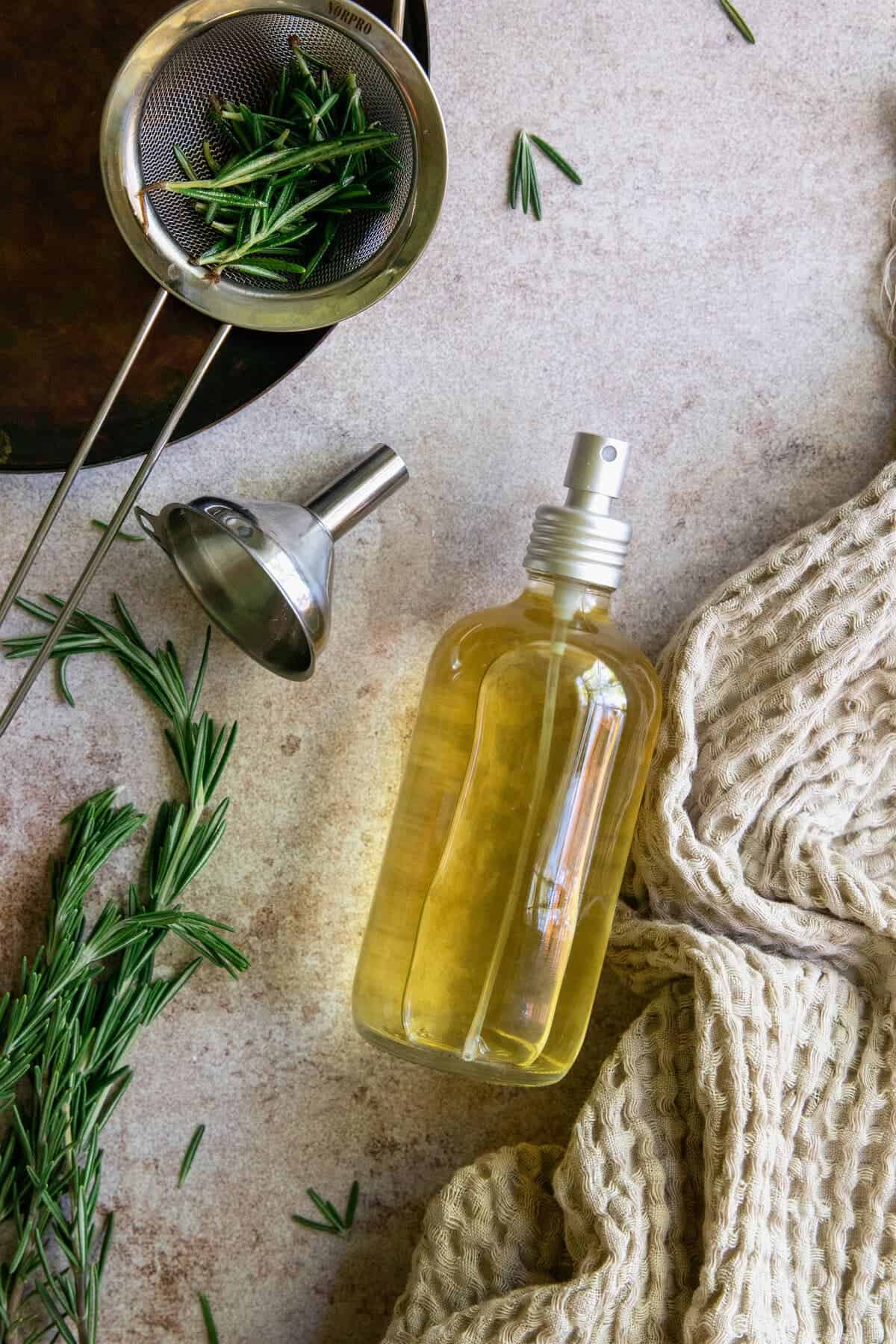
Don't want to buy essential oils or wait to infuse oils? This anti-inflammatory and antimicrobial herbal tonic that’s everywhere on social media is a perfect spritz-and-go solution for thinning hair.
Although not as potent as essential oils, it is an easy and cost-effective way to add rosemary to your hair routine.
Ingredients
- ¾ cup of rosemary leaves
- 1 cup of boiling water
Instructions
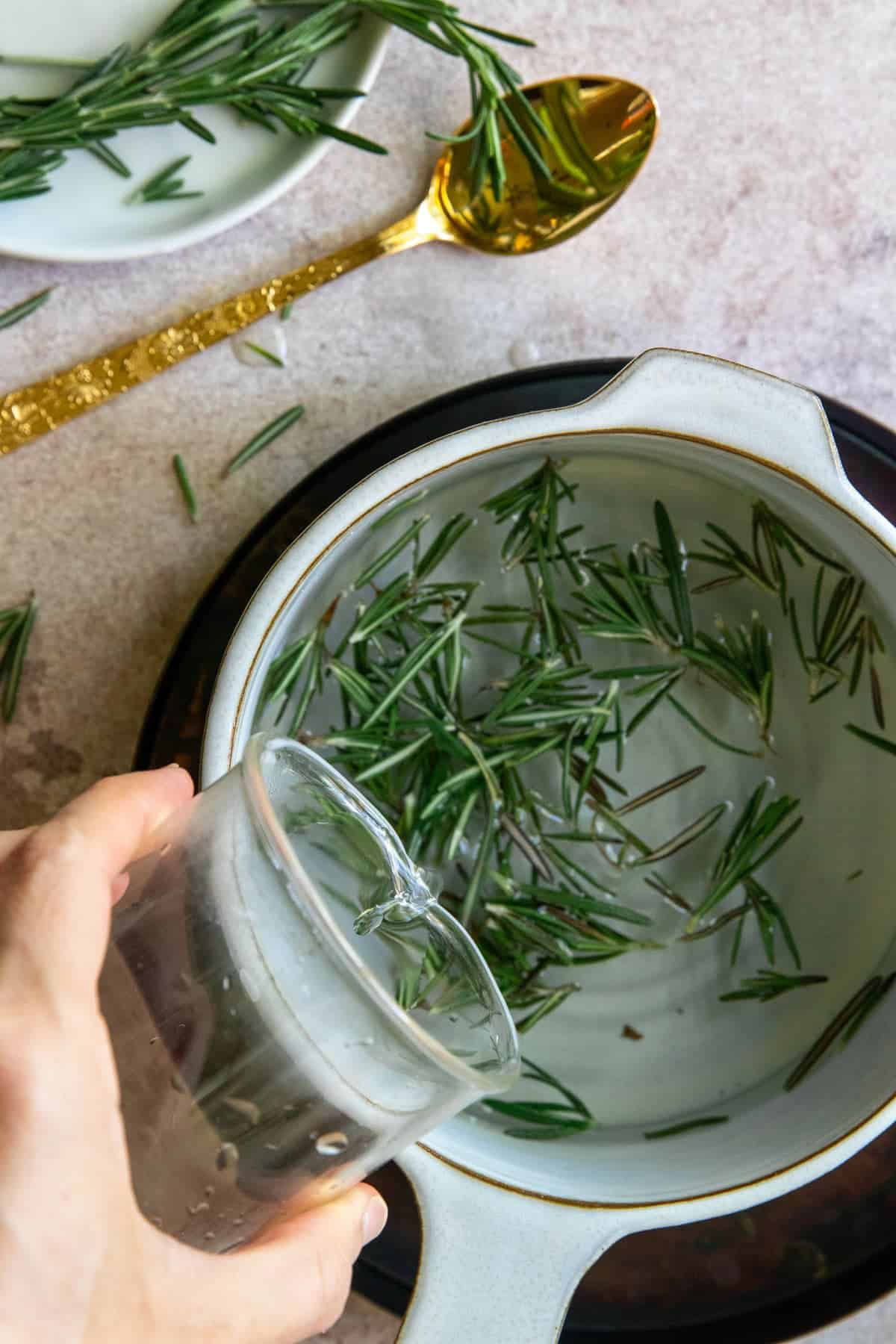
Step 1: Steep rosemary + water
Add ¾ cup of rosemary leaves to 1 cup of boiling water; steep for 1 hour.
Ways To Use Rosemary Hair Tea
Hair spritz: After shampooing, spritz the rosemary water onto your towel-dried hair, and massage it into the scalp and strands. Dry your hair and style it as usual.
Overnight mask: You can also spray it onto your hair before bed to leave on overnight. Repeat twice a week.
Hair rinse: Add 5–10 drops of rosemary EO and use it as a final rinse after shampooing and conditioning your hair. This can help to strengthen your hair and promote shine.
Before you go...
Rosemary oil has been traditionally used for centuries to promote hair growth, reduce dandruff, and improve the hair’s overall health and appearance. But it's not the only essential oil that's helpful for hair! Learn how you can use oils like lavender and peppermint for hair growth right here.
Rosemary Hair Serum Recipe
Equipment
- A 1-ounce bottle with dropper cap
- Funnel (optional)
Materials
- 6 drops lavender essential oil
- 8 drops rosemary essential oil
- 1 tablespoon jojoba oil
- 1 tablespoon argan oil (or sesame oil)
Instructions
- Pour the carrier oils and essential oils into a glass bottle that has a dropper top. Replace the lid and shake gently to combine the oils.
- To apply, put a couple of drops onto your palm, and use your fingertips to smooth the oil from the middle to the ends of wet or dry hair.
- You can also use the oil to give yourself a weekly scalp massage. Rub a few drops between your fingertips, and massage it into the roots of your hair. Then apply it to the ends of your hair to seal any split ends. Leave it on overnight if you have dry hair.
Notes
References
References
1. Veenstra JP, et al. Rosemary (Salvia rosmarinus): health-promoting benefits and food preservative properties. Int J Nutr. 2021.
2. Gonzalez-Minero FJ, et al. Rosmarinus officinalis L. (Rosemary): an ancient plant with uses in personal healthcare and cosmetics. Cosmetics. 2020.
3. Hay IC, et al. Randomized trial of aromatherapy: successful treatment for alopecia areata. Arch Dermatol. 1998.
4. Panahi Y, et al. Rosemary oil vs minoxidil 2% for the treatment of androgenetic alopecia: a randomized comparative trial. Skinmed. 2015.
5. Ezekwe N, et al. The use of natural ingredients in the treatment of alopecias with an emphasis on central centrifugal cicatricial alopecia: a systematic review. J Clin Aesthet Dermatol. 2020.
6. Gad HA, et al. Jojoba oil: an updated comprehensive review on chemistry, pharmaceutical uses, and toxicity. Polymers (Basel). 2021.
7. Pazyar N, et al. Jojoba in dermatology: a succinct review. G Ital Dermatol Venereol. 2013.
8. De Sá Dias TC, et al. Protective effect of conditioning agents on Afro-ethnic hair chemically treated with thioglycolate-based straightening emulsion. J Cosmet Dermatol. 2008.
9. Sharifi N, et al. Argan oil as a pretreatment of human hair before exposure to oxidative damage: attenuated total reflectance and protein loss studies. J Cosmet Dermatol. 2022.
10. Panahi Y, et al. Rosemary oil vs minoxidil 2% for the treatment of androgenetic alopecia: a randomized comparative trial. Skinmed. 2015.
11. Pieracci Y, et al. Antimicrobial activity and composition of five Rosmarinus (now Salvia spp. and varieties) essential oils. Antibiotics (Basel). 2021.
12. Patil TK. To study the antidandruff activity of rosemary oil, basil oil, coleus oil over selenium sulfide. J Pharm BioSci. 2018.
13. Lee BH, et al. Hair growth-promoting effects of lavender oil in C57BL/6 mice. Toxicol Res. 2016.

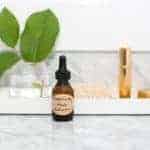
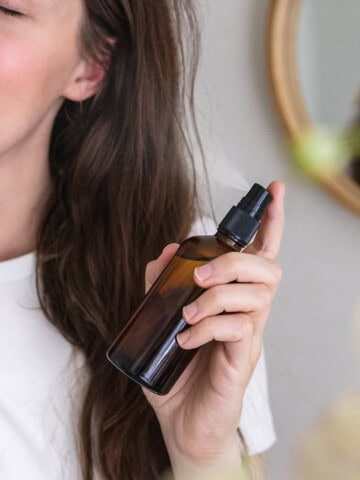
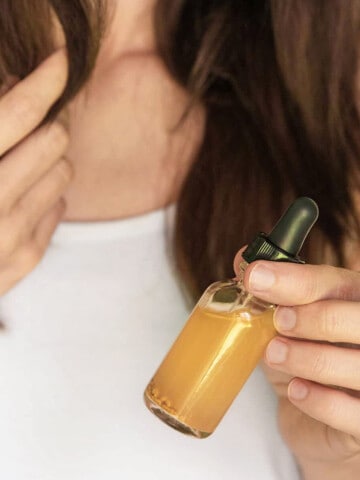
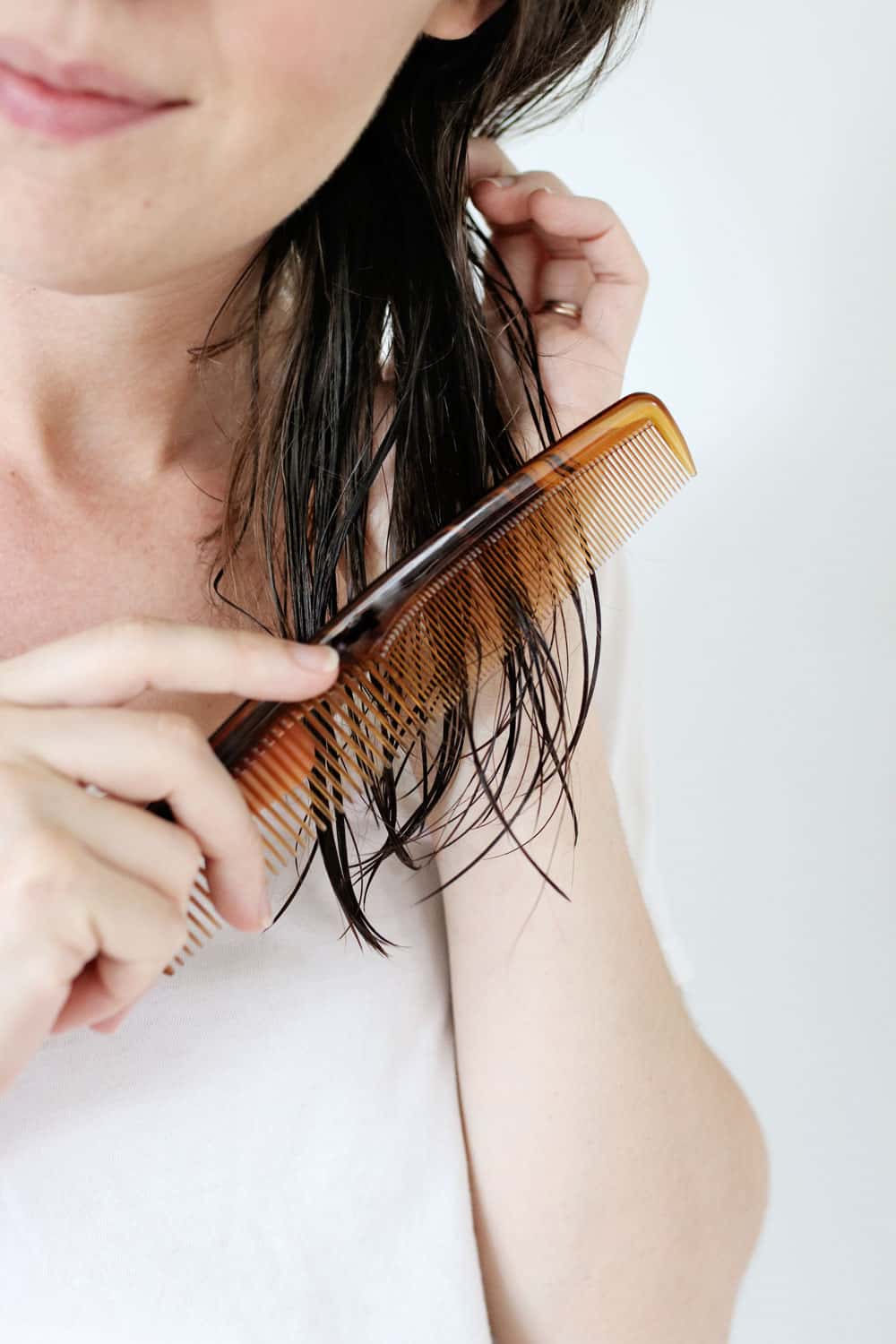
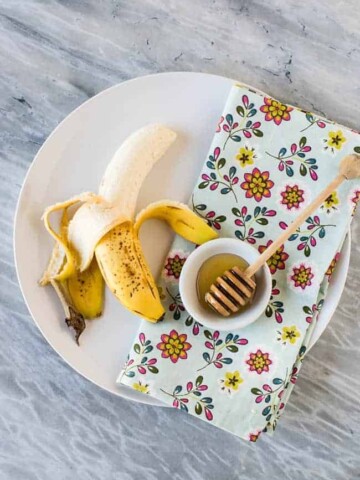
Leave a Comment